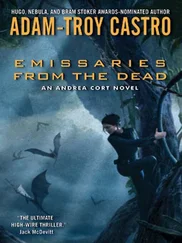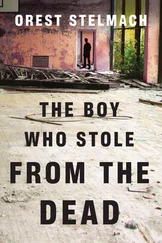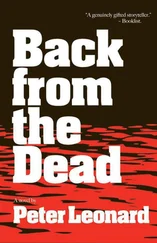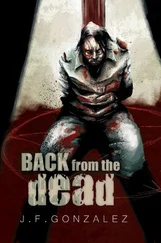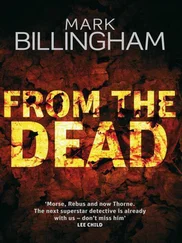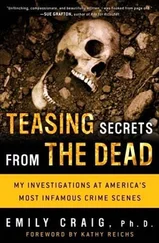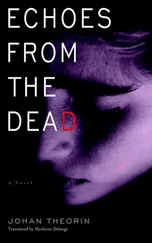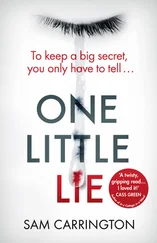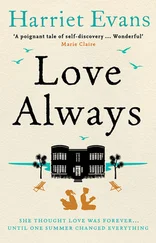“Let's start with the skull,” I suggested. “I can't wait to get my hands on that bullet.” Lambers watched in fascination as I soaked the skull in a basin of water, rinsing all the dirt away. Then I set up a fine wire-mesh screen, poured the dirty water through it, and breathed a sigh of triumph. There lay the bullet, intact upon the screen.
I took a picture of the bullet and packed it carefully into a small envelope labeled with the case number, the date, and my initials. Later I'd take it downstairs to the ballistic experts in the state police lab.
Lambers and I looked at the rest of the evidence bags, feeling like two kids on Christmas morning. So much intriguing evidence-where would we begin?
“There's no real way to decide,” I said finally. “Let's just pick what interests us most and start there.”
Lambers nodded and said exactly what I was thinking: “The money clip.”
As I went through the shopping bags, Lambers prepared to resume his job from the day before, taking notes on everything I said and did. With mounting excitement, I pulled out the two plastic evidence bags that held the money clips. Even through the sand and ground-in dirt, I could see that the larger one was engraved with an intricate cross-hatch pattern and the initials HS-or was it SH? Frustratingly, both ways looked correct. The other one was engraved also, but with simple straight lines. Both bore marks indicating they were made of 14-karat gold.
Lambers was quick to conclude that this probably wasn't a robbery. “These were in his pockets, Doc. It's hard to believe that someone would take a wad of bills out of solid-gold money clips and then put the clips back into the guy's pocket.”
I had to agree. “And you can't quite see some derelict just picking them up while scrounging around, can you? You'd need a wad of bills to buy each one.”
I took the clips over to my sink and gently rinsed them in clear, warm water, removing the last traces of sand with a soft toothbrush. After I laid them on a clean blue towel to dry, Lambers and I each took several photographs with both conventional and digital cameras. In this case, Lambers and I would rely on conventional photographs as evidence, but I e-mailed the electronic pictures to Detective Daly in Fort Thomas, where they appeared on the evening news that very night.
Next, I looked at the eyeglasses, their cloudy lenses surrounded with thick black plastic frames. “Not too stylish, are they?” I asked Lambers, who was busy noting the time I had opened the bag.
“No, but they sure are big.” Indeed they were: From side to side, the earpieces measured almost eight inches.
“Well, his bones are big,” I answered. “And with these glasses, it looks like a lot of flesh must have covered his bones, but we'll know more once we get to his clothes. That's going to be a monumental task, so let's say we do a few more easy ones first.” Lambers nodded as he handed me the bag labeled SOCKS.
The socks were made of a thin synthetic fiber and were almost twenty inches long, another indication that our victim had been large. At the top of each cuff, I found a clump of rusty metal imbedded in the fabric. When I scraped off the corrosion with a small knife, I saw that these were garter snaps. This man had been wearing knee socks, held up by garters-an unusual style, to say the least.
Lambers handed me the bag labeled GLOVES. They were big, too, but I could see that they'd been hand-stitched from smooth leather. The same was true of his belt.
Now I couldn't wait to get a good look at his clothes. Although Mark had originally described the cloth as workman's blue, it was actually closer to a dark blue-green. As I carefully pulled the fragile fabric from the evidence bag, I brushed off the loose dirt, flattened the fabric with my hands, and laid it out on the gurney. Soon I could see that each piece was an individual panel of the same garment. The threads that once held these garments together had disintegrated, perhaps because, until the last few decades, most thread was made of cotton, a natural fiber that decomposes rapidly. The cloth itself was in remarkably good shape. It looked and felt like polyester, a petroleum-based product that theoretically can last forever.
After an hour's careful unfolding and matching, I managed to reassemble a pair of trousers, a suit jacket, and a long-sleeved shirt. As I looked at his clothes, I began to imagine the man who had worn them had been a large, heavyset man. Fat? Or perhaps he'd just been big-boned and well-muscled. So far, all we knew was that he'd worn big clothes. A simple measuring tape told us that his jacket measured 58 inches around the chest, while it had taken a 48-inch waistband to circle his waist. His arms and his legs were long, and his neck was big too, almost 18 inches in circumference.
Although the threads connecting these panels were gone, I could still see the seams and darts, and it appeared as if the suit had been hand-tailored to a custom fit. Evidently, he'd been stylishly dressed, but for what era? After we'd finished recovering all these things yesterday, I would have guessed that they'd lain in their secret grave for at least ten years. But I associated this type of tailored polyester suit with the mid-1960s. (Lambers, of course, had never seen one at all!)
“This guy dresses like a Cold-War Russian,” I found myself saying, and then asked myself what had brought that image to mind. Something in the cut of his suit recalled for me TV footage of foreign dignitaries meeting with President John F. Kennedy, something old-fashioned and European…
I pulled out a pencil and a couple of sheets of paper and tapped into my rusty medical-illustration skills. As Lambers called out the measurements of each garment, I sketched out labeled diagrams of the suit jacket, the trousers, and the shirt, complete with notes about the placement and size of buttons, pockets, pleats, even the epaulets on the shoulders of the shirt, and not forgetting the type and manufacturer of the zipper. As Lambers watched in fascination, I went online to search vintage clothing sites.
I showed him a few images. “What do you think?” I asked him. “1960s? 1970s? We're getting back there, anyway.”
Lambers shook his head. “If he was killed way back then, we'll never find out who did it.”
I sighed. “Right now I'm more concerned with figuring out who he was.”
“That won't be easy either.”
He was right, of course. It was hard enough identifying a pile of bones that had lain in the woods for a year or more. If this man had been there for two or three decades…
“Anyway, the clothes give us somewhere to start,” I said. I shot off a few e-mails to the names I'd seen on the vintage clothing sites we'd just browsed. An expert opinion might at least pinpoint the year these clothes had been in fashion. That wouldn't be definitive-the victim might have stolen the clothes, or borrowed them, or bought them from a thrift shop. He might even be the kind of guy who wore the same suit for decades. But, as I'd told Lambers, it was a place to start.
We moved on to the gold pen and pencil set. When I gently scraped away the dirt from the pen's clip, I began to make out a faint logo: C-R-O-S-S.
“It's a Cross pen,” I said to Lambers. I could tell by his blank look that the name meant nothing. “Cross,” I repeated. “It's a kind of upscale brand. For people who care about that kind of thing, it's maybe the Rolls-Royce of pens. Each one of them is individually made, and all by hand. A friend of mine wanted to get one for her nephew's graduation, and she only spent about a hundred dollars, but she told me that some models cost more than five hundred.”
Lambers's eyes widened. “For a pen ?”
I pointed to the next evidence bag. “And a pencil. Solid gold, matching set…” I made a mental note to contact the Cross company. Maybe they could tell me when this particular style had been on the market.
Читать дальше

